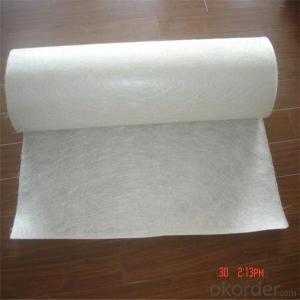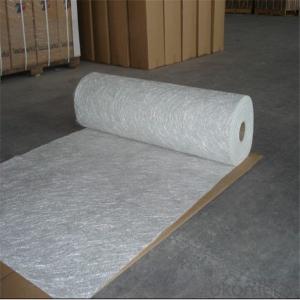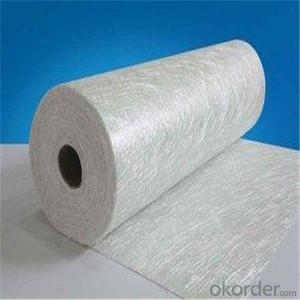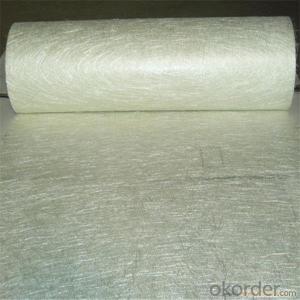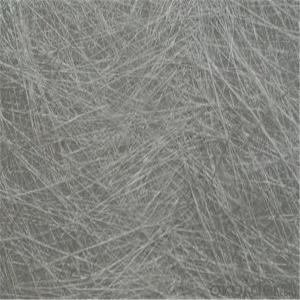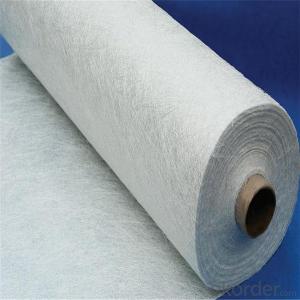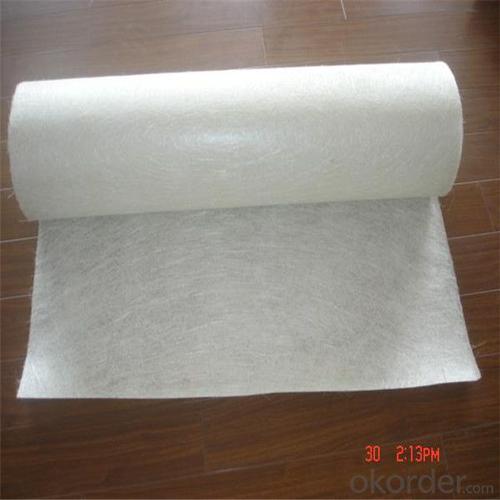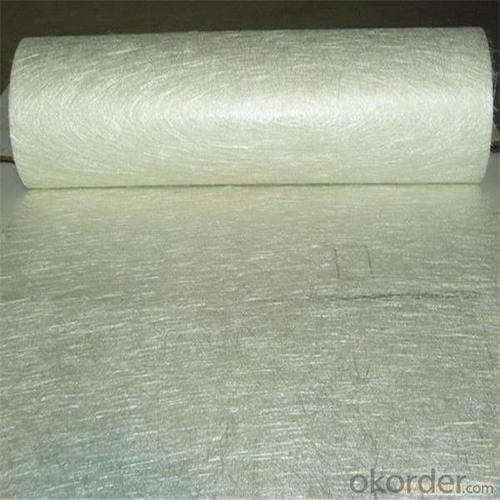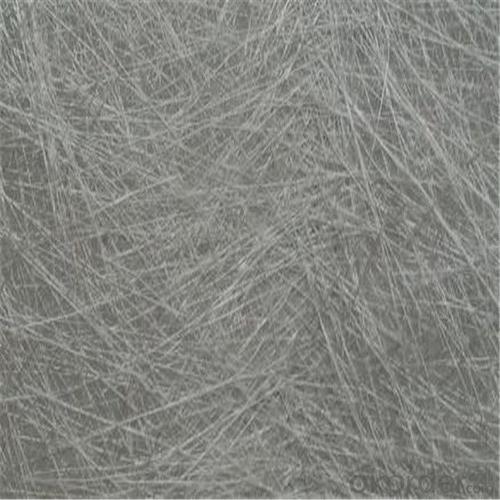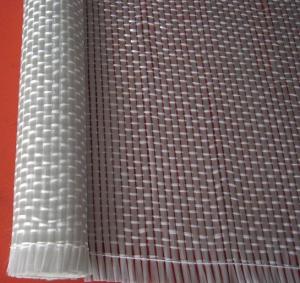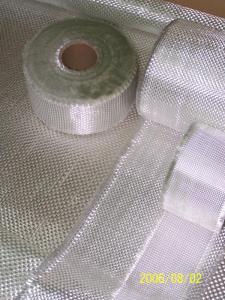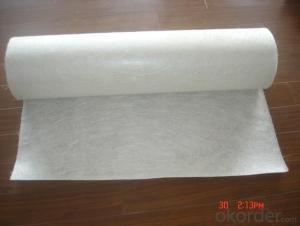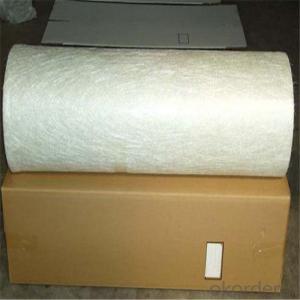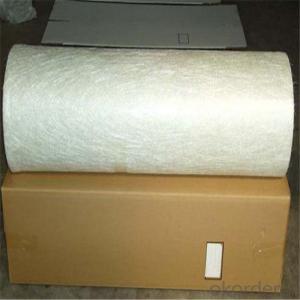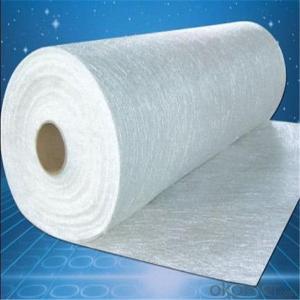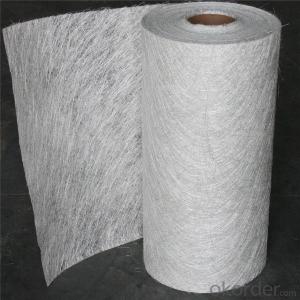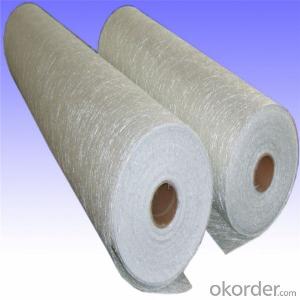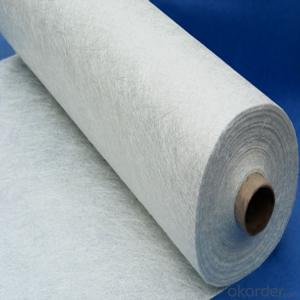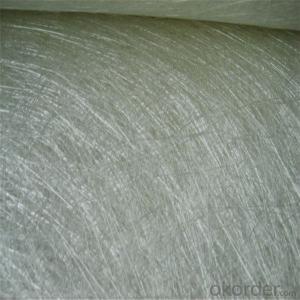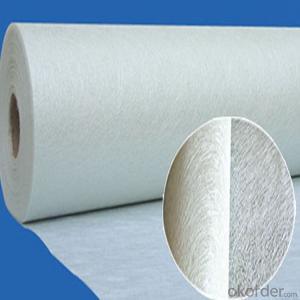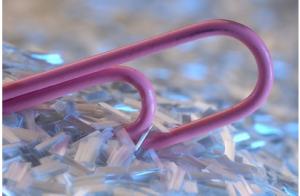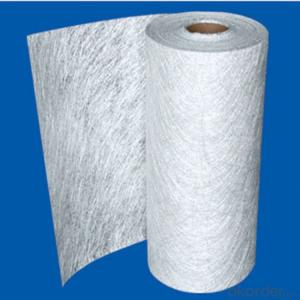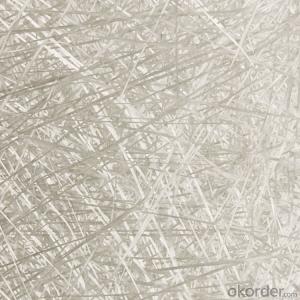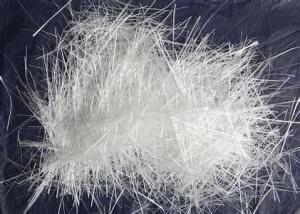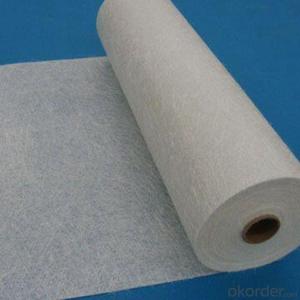Chop Strand Fiberglass Mat - E-Glass Chopped Strand Mat, Woven Fiberglass Cloth
- Loading Port:
- Tianjin
- Payment Terms:
- TT OR LC
- Min Order Qty:
- 100 m.t.
- Supply Capability:
- 10000 m.t./month
OKorder Service Pledge
OKorder Financial Service
You Might Also Like
Quick Details
| Technique: | Chopped Strand Fiberglass Mat (CSM) | Dimensions: | 80g - 900g | Mat Type: | Continuous Filament Mat |
| Fiberglass Type: | E-Glass | Softness: | soft, very soft | Place of Origin: | Shandong, China (Mainland) |
| Brand Name: | cnbm | Model Number: | CSM | material: | fiberglass |
| Glass type: | E glass / C glass | Bond type: | powder or emulsion | Roll width: | 200 - 2600mm |
| Roll weight: | 28 - 55kgs | Density: | 225g/m2, 300g/m2, 450g/m2 | Certification: | ISO, CE |
Packaging & Delivery
| Packaging Details: | standand export packing . or packed as customer's need |
| Delivery Detail: | 10-20days after the contract is effective |
Specifications
Fiberglass Chopped Strand Mat
1.good combination fo resin
2.easy operation
3.good wet strength retention
Specification:
Fiberglass Chopped Strand Mat is an non-woven E- or C-glass fiberglass fabric manufactured by spreading continuous filament rovings of 50mm in length randomly and uniformly in combination with polyester binder in power form (or other binder in emulsion form). Powder or Emulsion fiberglass fiber chopped glass mat
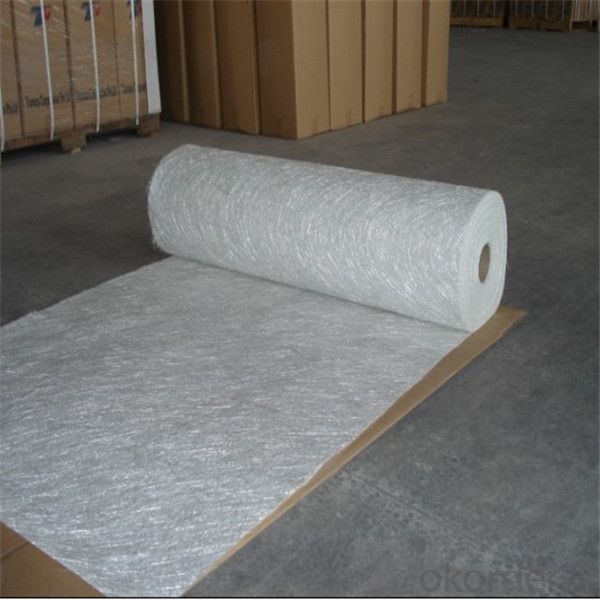
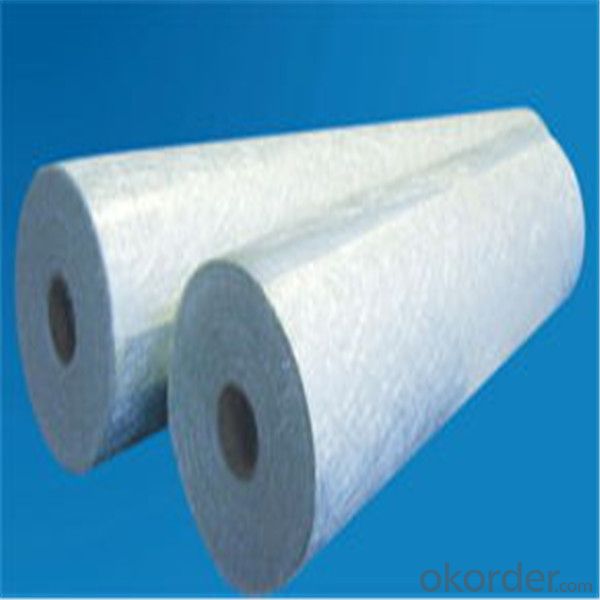
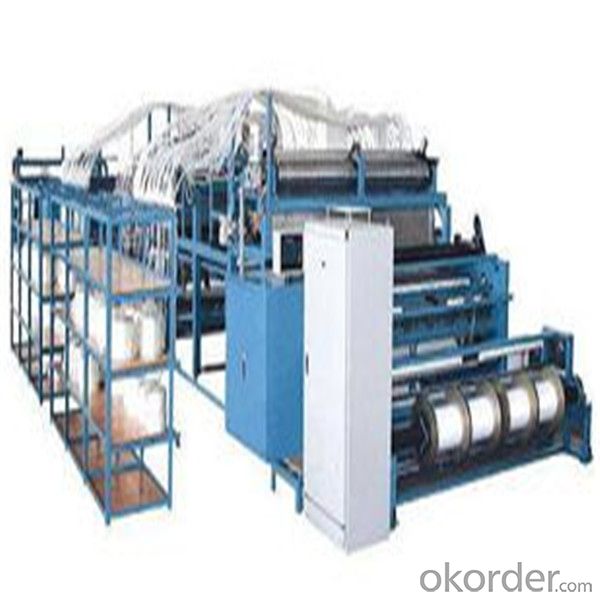
- Q: How is fiberglass chopped strand used in the electrical and electronics industry?
- Fiberglass chopped strand is widely used in the electrical and electronics industry for various applications due to its excellent electrical insulation properties and mechanical strength. One of the key uses of chopped strand in this industry is for the production of electrical insulation materials. Chopped strand is commonly used as a reinforcement material in the production of electrical insulation tapes, which are widely used to insulate coils and windings in motors, transformers, and other electrical equipment. The high tensile strength and dimensional stability of fiberglass chopped strand make it an ideal choice for enhancing the mechanical properties of insulation tapes, ensuring their durability and reliability. Additionally, chopped strand is also used in the manufacturing of electrical laminates and composites. These laminates are used in the construction of various electrical components such as circuit boards, switchgear, and insulating barriers. The fiberglass reinforcement provides the necessary mechanical strength and rigidity to these laminates, while also improving their electrical insulation properties. Furthermore, chopped strand is utilized in the production of electrical connectors and terminals. By incorporating fiberglass reinforcement, these components can withstand high temperatures and mechanical stresses, while maintaining excellent electrical conductivity. This makes fiberglass chopped strand an essential component in ensuring the long-term reliability and performance of electrical connectors and terminals. Overall, fiberglass chopped strand plays a crucial role in the electrical and electronics industry by providing enhanced electrical insulation, mechanical strength, and dimensional stability to a wide range of products. Its versatility and reliability make it an indispensable material in the design and manufacturing of electrical insulation materials, laminates, connectors, and terminals.
- Q: Can fiberglass chopped strand be used for electrical insulation?
- No, fiberglass chopped strand is not typically used for electrical insulation. While fiberglass is an excellent insulating material in certain applications, chopped strand is typically used for reinforcement purposes in composite materials. For electrical insulation, materials like rubber, plastic, or specialized insulating tapes are more commonly used due to their specific electrical properties and ability to withstand high voltages.
- Q: Can fiberglass chopped strand be used in the manufacturing of electrical enclosures?
- Yes, fiberglass chopped strand can be used in the manufacturing of electrical enclosures. Fiberglass chopped strand is a reinforcing material that is made up of glass fibers that have been chopped into small pieces. It is commonly used in various industries, including electrical engineering, due to its excellent electrical insulation properties. When used in the manufacturing of electrical enclosures, fiberglass chopped strand can provide added strength and durability to the enclosures. It helps enhance the mechanical properties of the enclosure, making it resistant to impact, corrosion, and other external factors. Additionally, fiberglass chopped strand is non-conductive, which is crucial in electrical applications as it helps prevent any electrical shorts or hazards. Furthermore, fiberglass chopped strand can be easily molded or formed into complex shapes, making it suitable for manufacturing enclosures with intricate designs or specific requirements. It can also be combined with other materials, such as resins or polymers, to create composite materials that offer improved performance and versatility. Overall, the use of fiberglass chopped strand in the manufacturing of electrical enclosures offers numerous benefits, including enhanced strength, durability, electrical insulation, and flexibility in design.
- Q: Can fiberglass chopped strand be used for reinforcing ceramic materials?
- Indeed, fiberglass chopped strand can be utilized to reinforce ceramic materials. Comprising of small strands of glass fibers typically measuring 1-3 inches in length, this fiberglass chopped strand can be incorporated into ceramic materials like clay or porcelain to bolster them and enhance their mechanical properties. When integrated into ceramic materials, the fiberglass chopped strand functions as a reinforcement phase, augmenting the strength, toughness, and resistance to cracking of the ceramic matrix. The fibers effectively distribute stress throughout the material, impeding crack propagation and elevating its overall durability. Additionally, the thermal expansion coefficient of fiberglass closely resembles that of ceramics compared to alternative reinforcing materials like steel or carbon fibers. This implies that when the ceramic material expands or contracts due to temperature fluctuations, the fiberglass reinforcement will likewise expand or contract at a similar pace, thereby minimizing the likelihood of delamination or damage to the composite structure. In conclusion, the utilization of fiberglass chopped strand as a reinforcement in ceramic materials can substantially enhance their performance and prolong their lifespan in diverse applications, encompassing aerospace, automotive, and construction industries.
- Q: Can fiberglass chopped strand be used in the production of agricultural equipment?
- Indeed, the utilization of fiberglass chopped strand is possible in the manufacturing of agricultural equipment. Fiberglass, being a highly adaptable material, possesses numerous advantageous properties that prove beneficial in agricultural applications. Its lightweight nature, strength, and durability render it appropriate for incorporation in the construction of tractor hoods, fenders, and panels. Moreover, fiberglass exhibits remarkable resistance to corrosion, a crucial attribute in the agricultural industry where equipment is frequently exposed to diverse weather conditions and chemicals. Furthermore, the ability of fiberglass to be molded into intricate forms allows for the customization of agricultural equipment to meet specific requirements. In summary, the inclusion of fiberglass chopped strand in the production of agricultural equipment significantly enhances its performance, longevity, and reliability.
- Q: What are the typical end-use industries for fiberglass chopped strand composites?
- The typical end-use industries for fiberglass chopped strand composites include automotive, aerospace, construction, marine, wind energy, and electrical applications.
- Q: How does the surface treatment of the chopped strand affect its performance?
- The surface treatment of the chopped strand can significantly affect its performance. The treatment helps improve the adhesion between the strand and the resin matrix, resulting in enhanced mechanical properties and overall strength of the composite material. It also helps reduce fiber breakage during processing and improves the strand's wet-out characteristics, leading to better fiber dispersion and resin impregnation. Additionally, the surface treatment can enhance the strand's resistance to moisture, chemicals, and environmental degradation, thereby improving its durability and long-term performance.
- Q: How does the water absorption of the chopped strand affect its performance?
- The performance of chopped strand can be significantly affected by its water absorption. When water is absorbed by the chopped strand, it can cause various negative consequences. To begin with, the weight of the chopped strand can increase due to water absorption, impacting its handling and processing. This can make it more challenging to work with and necessitate adjustments in the manufacturing process. Moreover, the mechanical properties of the chopped strand can be weakened as a result of water absorption. The water's presence can degrade the matrix material, leading to a reduction in the overall strength and stiffness of the composite. As a result, the performance of the chopped strand may be compromised, and its structural integrity may be at risk. Additionally, water absorption can cause dimensional changes in the chopped strand. As water is absorbed, the chopped strand may expand or swell, resulting in dimensional instability and distortion. This can pose a particular problem in applications where precise dimensions are crucial. Furthermore, the presence of water can promote the growth of microorganisms like mold and bacteria, further degrading the chopped strand and its performance. Therefore, it is vital to minimize water absorption in chopped strand applications in order to maintain optimal performance. This can be achieved through appropriate material selection, surface treatment, and the implementation of sealing or coating techniques to prevent or reduce water absorption.
- Q: How does the density of chopped strand composites compare to other materials?
- The density of chopped strand composites is typically lower than that of many other materials. Chopped strand composites are made by reinforcing a matrix material, such as resin, with short strands of fibers, usually glass or carbon. These fibers are randomly oriented and provide strength and stiffness to the composite structure. Compared to materials like metals, chopped strand composites have a lower density. Metals, such as steel or aluminum, have a higher density due to their atomic structure. This higher density can result in heavier components, which may not be desirable in certain applications where weight reduction is important. On the other hand, chopped strand composites have a density similar to or slightly higher than some polymers. Polymers are lightweight materials, and when reinforced with fibers, they can achieve higher strength and stiffness than their unreinforced counterparts. However, the addition of fibers increases the density of the composite. Overall, the density of chopped strand composites falls in the middle range when compared to other materials. It provides a balance between lightweight characteristics and mechanical properties, making it a suitable choice for various applications where weight reduction, strength, and stiffness are important factors.
- Q: What are the typical weight percentages of fiberglass chopped strand used in composites?
- The typical weight percentages of fiberglass chopped strand used in composites can vary depending on the specific application and desired properties. However, it is common for the weight percentage of fiberglass chopped strand to range from 10% to 50% in composite materials.
Send your message to us
Chop Strand Fiberglass Mat - E-Glass Chopped Strand Mat, Woven Fiberglass Cloth
- Loading Port:
- Tianjin
- Payment Terms:
- TT OR LC
- Min Order Qty:
- 100 m.t.
- Supply Capability:
- 10000 m.t./month
OKorder Service Pledge
OKorder Financial Service
Similar products
Hot products
Hot Searches
Related keywords
